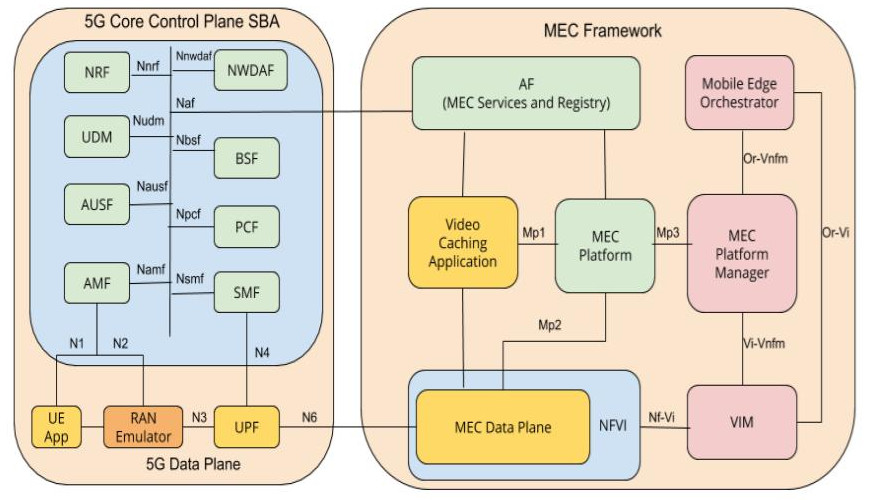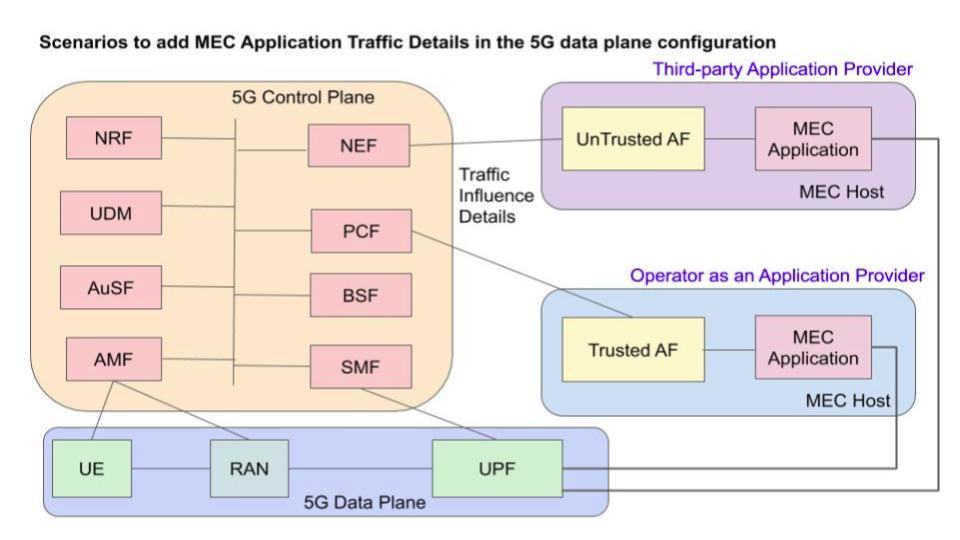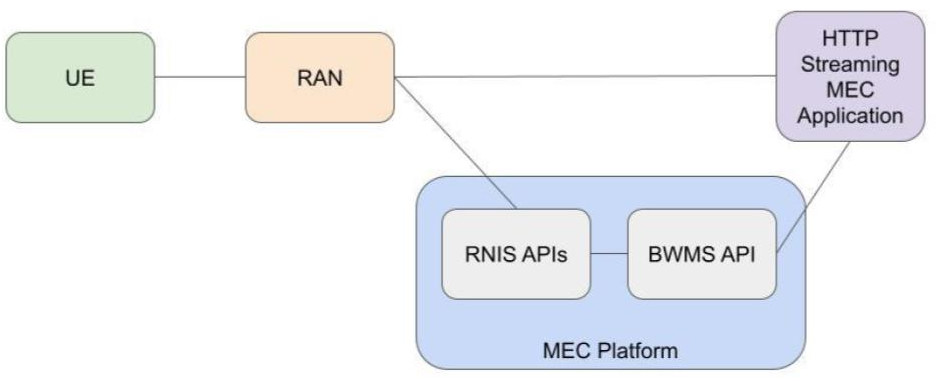5G : Multi-access Edge Computing (MEC)
Our team from Networked Wireless Systems Lab (NeWS Lab) at IITH has built a MEC framework and integration with our developed 5G core network. We focused mainly on developing a MEC component (MEC platform and MEC Services) as per ETSI compliance and 3GPP compliant for the integration with the 5G core network. The MEC Service Based Architecture(SBA) framework is realized and implemented with REST APIs using HTTP/1.1 and HTTP/2 libraries.

Following are the functionalities of MEC Components and 5G Network Functions that we support:
MEC Components:
1. MEC Platform: It registers MEC Services and MEC Applications. It acts as a mongo based service registry.
2. MEC Applications:
- DASH-based Video Caching Application to demonstrate caching feature at the edge.
- HTTP- Streaming Application to demonstrate the bandwidth allocation as per radio signal information.
3. Radio Network Information MEC Service: This MEC service acquires the radio network information of the UEs from the radio access network (RAN) and provides it to the MEC applications.
4. Bandwidth Management MEC Service: It manages the bandwidth requirements of each deployed MEC application in the MEC platform.
5G Core Network Functions:
1. Application Function(AF): It acts as one of the MEC services called the 5GCoreConnect service. It has traffic influence functionality to send traffic routing details of the MEC applications.
2. Network Exposure Function(NEF): It acts as an intermediary NF to integrate third-party MEC applications' traffic rules and interact with the 5G core entities.
3. Binding Support Function(BSF): It helps to find the IP address of the PCF during policy rule addition given by the MEC application.
4. Policy Control Function(PCF): This network function helps to save the policy rule for the MEC application.
5. Session Management Function(SMF): As per the MEC policy rule stored using PCF, the session is established for the UE to access the deployed MEC application.
6. Location Management Function(LMF): This network function has control-plane REST APIs to get the UE location information in an emergency. It uses LTE Positioning Protocol(LPP) for location messages.
7. User Equipment(UE): A Docker-based firefox browser demonstrates the MEC applications.
8. Radio Access Network(RAN): It creates a temporary database of radio signal details of UEs and provides this radio network information of UE to the MEC platform.
Developed MEC Use Cases as a part of 5G Testbed:
1. Integration of MEC components and 5G Core network
It includes the development Application Function(AF) for adding traffic rules of MEC applications in the 5G core network. After adding rules, data traffic will be routed to the trusted operator's MEC applications via Application Function(AF).

2. Deployment of third-party MEC applications and integration with the 5G core network via Network Exposure Function(NEF)
It includes the development of 3GPP Release 15 (29.522) compliant Network Exposure Function(NEF) to create northbound APIs which handle communication between untrusted AF and third-party MEC applications. Using NEF, third-party MEC application providers can deploy their MEC applications and interact with the 5G core network to set up a data plane path for the MEC applications.

3. Deployment of MEC Components in a Network Function Virtualization(NFV) framework using Open Source MANO(OSM) and Openstack.
Network services of MEC components are deployed in a container format using an OSM orchestrator to incorporate NFV functionalities such as auto-scaling of MEC components as per user demand, deployment of MEC components at a specified data center(VIM), and its performance management.

4. Location-Based MEC Service:
It includes the development of UE-based location use case for MEC application using the 5G emergency-based control plane location feature. LTE Positioning Protocol(LPP) based message creation and send it to the UE using NGAP/NAS messaging.

5. Development of radio-aware bandwidth management use case for the HTTP streaming MEC application.
The main motive of this use case is adapting video quality as per radio network information (use of MEC RNIS APIs) and adjusting the bandwidth (use of BWMS APIs) of the deployed MEC applications at the MEC Platform. The idea is to bring QoS control functions (bandwidth resource adjustment) closer to the end-user and thus to respond more timely to the dynamic changes in radio network conditions.

Research Publications
Supriya Dilip Tambe,and Antony Franklin, "Multi-access edge computing in cellular networks", CSI Transactions on ICT, May, 2020. [Accepted Version ][DOI Link]
Supriya Dilip Tambe , Yogesh Mandge , and Antony Franklin, "Performance Study of Large Scale Network Slice Deployment in a 5G Core Testbed",in in Proc. of the 4th IEEE 5G World Forum (5GWF), 2021.[DOI Link ]
Demonstrations
Supriya Tambe, Shwetha Vittal, Pratik Bendre, Supriya Kumari and Antony Franklin, "Demonstration of 5G-MEC assisted Location Services for Mission Critical Applications", in 8th International Conference on Network Softwarization (NetSoft 2022), Milan, Italy, June 2022. [Accepted Version ]
Supriya Tambe , Yogesh Mandge and Jyoti Tiwari presented Demo at NCC 2019, IISc Banglore on 'Real Time Video Caching Over Low Latency MEC in OAI LTE Network' as a part of 5G Testbed Project.